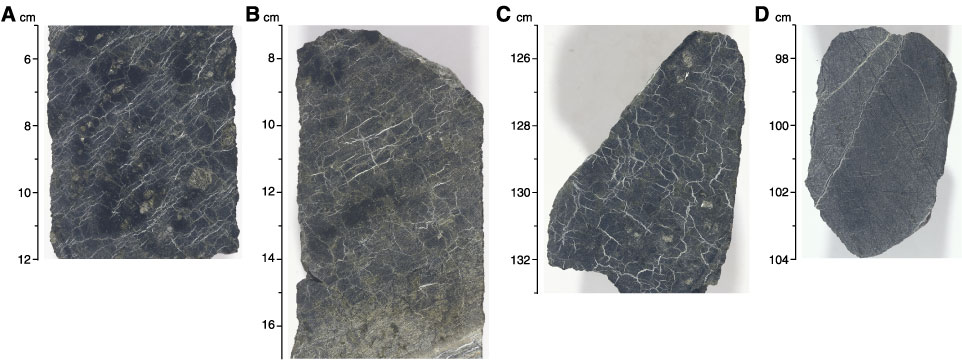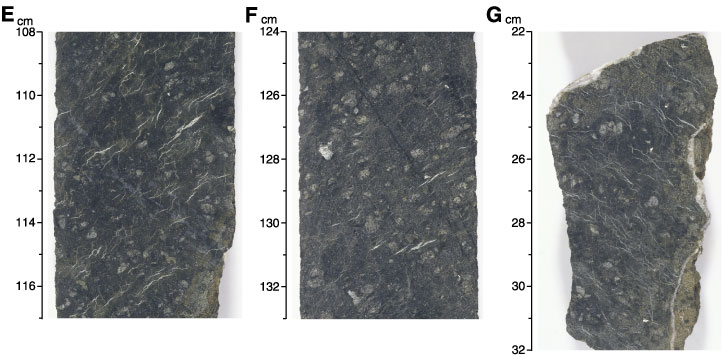
Figure F44. Examples of alteration veins and their crosscutting relationships in harzburgites and dunites from Hole 1274A. A. Typical serpentine foliation defined by chrysotile veins in a harzburgite (interval 209-1274A-17R-2, 5–12 cm). B. Weak serpentine foliation defined by chrysotile veins in a harzburgite with a conjugate set of more steeply dipping veins (interval 209-1274A-15R-2, 7–17 cm). C. An example of the mesh/anastomosing vein sets occasionally shown by the chrysotile veins in the harzburgites (interval 209-1274A-16R-2, 125–133 cm). D. Typical dunite, showing an early planar magnetite-serpentine vein, cut by a later white picrolite vein and sparse white chrysotile veins (interval 209-1274A-20R-1, 97–104 cm).
E. Harzburgite showing early pale gray picrolite vein cut by
chrysotile veins (interval 209-1274A-5R-2, 108–117 cm). F.
Harzburgite showing early black magnetite-serpentine vein cut by chrysotile
veins (interval 209-1274A-27R-1, 124–133 cm). G. Harzburgite
showing chrysotile vein foliation cut by late carbonate vein on the right side
of the piece (interval 209-1274A-12R-1, 22–32 cm).





![]()